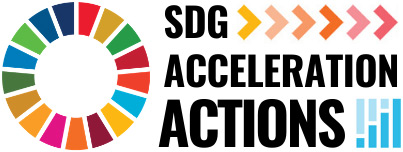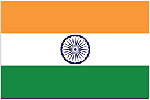India plans to produce 175 GW of renewable energy by 2022
(
Government
)
#SDGAction43428
Description
The Ministry of Urban Development had requested all States & UTs, in 2014 to issue necessary directives to all State Government Departments for using rooftop of buildings under their control for solar power generation on mandatory basis and also to local bodies under their jurisdiction to incorporate the similar provision in their building bye-laws so that installation of Roof Top Systems (RTS) on rooftops of all types of buildings in their jurisdiction may become mandatory. Further, the Ministry of Urban Development also issued Model Building Bye-Laws, 2016, in which suitable provisions for installation of RTS on buildings have been incorporated. Four States/UTs viz. Haryana, Chandigarh, Uttar Pradesh and Chhattisgarh have already issued mandatory notifications for installation of RTS in different categories of buildings.
The Capacity Utilization Factor (CUF) of solar power projects is less than thermal, hydro, nuclear, wind and bio-mass power projects. The Government has launched several schemes for promotion and development of renewable energy including solar energy in the country from time to time. The Government is promoting development of solar energy in the country by providing various fiscal and promotional incentives such as accelerated depreciation, waiver of Inter State Transmission System (ISTS) charges and losses, financing solar rooftop systems as part of home loan, and permitting Foreign Direct Investment up to 100 per cent under the automatic route.
India has been targeting to add large-scale conventional power capacities, as alternatives were very costly. Now, however, with solar and wind power becoming commercially viable in comparison to marginal mainstream sources (particularly imported coal, and nuclear based generation), there are additional choices available to policymakers concerned with the technical, economic, and environmental characteristics of a future power system that can keep pace with the economic growth. In view of the above, India’s Intended Nationally Determined Contribution (INDC) aims to base 40% of the total installed power generation capacity on non-fossil fuel resources by 2030 with international support on technology transfer and financing. This includes Government of India’s ambitious target of achieving 175GW of RE by the year 2022 that marks 75 years of our independence.
SDGS & Targets
Goal 7
Ensure access to affordable, reliable, sustainable and modern energy for all
7.1
By 2030, ensure universal access to affordable, reliable and modern energy services
7.1.1
Proportion of population with access to electricity
7.1.2
Proportion of population with primary reliance on clean fuels and technology
7.2
7.2.1
Renewable energy share in the total final energy consumption
7.3
7.3.1
Energy intensity measured in terms of primary energy and GDP
7.a
7.a.1
International financial flows to developing countries in support of clean energy research and development and renewable energy production, including in hybrid systems
7.b
By 2030, expand infrastructure and upgrade technology for supplying modern and sustainable energy services for all in developing countries, in particular least developed countries, small island developing States, and land-locked developing countries, in accordance with their respective programmes of support
7.b.1
Installed renewable energy-generating capacity in developing and developed countries (in watts per capita)
Goal 13
Take urgent action to combat climate change and its impacts
13.1
Strengthen resilience and adaptive capacity to climate-related hazards and natural disasters in all countries
13.1.1
Number of deaths, missing persons and directly affected persons attributed to disasters per 100,000 population
13.1.2
Number of countries that adopt and implement national disaster risk reduction strategies in line with the Sendai Framework for Disaster Risk Reduction 2015–2030
13.1.3
Proportion of local governments that adopt and implement local disaster risk reduction strategies in line with national disaster risk reduction strategies
13.2
Integrate climate change measures into national policies, strategies and planning
13.2.1
Number of countries with nationally determined contributions, long-term strategies, national adaptation plans and adaptation communications, as reported to the secretariat of the United Nations Framework Convention on Climate Change
13.2.2
Total greenhouse gas emissions per year
13.3
Improve education, awareness-raising and human and institutional capacity on climate change mitigation, adaptation, impact reduction and early warning
13.3.1
Extent to which (i) global citizenship education and (ii) education for sustainable development are mainstreamed in (a) national education policies; (b) curricula; (c) teacher education; and (d) student assessment
13.a
Implement the commitment undertaken by developed-country parties to the United Nations Framework Convention on Climate Change to a goal of mobilizing jointly $100 billion annually by 2020 from all sources to address the needs of developing countries in the context of meaningful mitigation actions and transparency on implementation and fully operationalize the Green Climate Fund through its capitalization as soon as possible
13.a.1
Amounts provided and mobilized in United States dollars per year in relation to the continued existing collective mobilization goal of the $100 billion commitment through to 2025
13.b
Promote mechanisms for raising capacity for effective climate change-related planning and management in least developed countries and small island developing States, including focusing on women, youth and local and marginalized communities
13.b.1
Number of least developed countries and small island developing States with nationally determined contributions, long-term strategies, national adaptation plans and adaptation communications, as reported to the secretariat of the United Nations Framework Convention on Climate Change
SDG 14 targets covered
Deliverables & Timeline
Resources mobilized
Partnership Progress
Feedback
Action Network

Timeline
Entity
Region
- Asia and Pacific
Geographical coverage
More information
Countries

Contact Information
SIDDHARTH MALIK, Mr.

